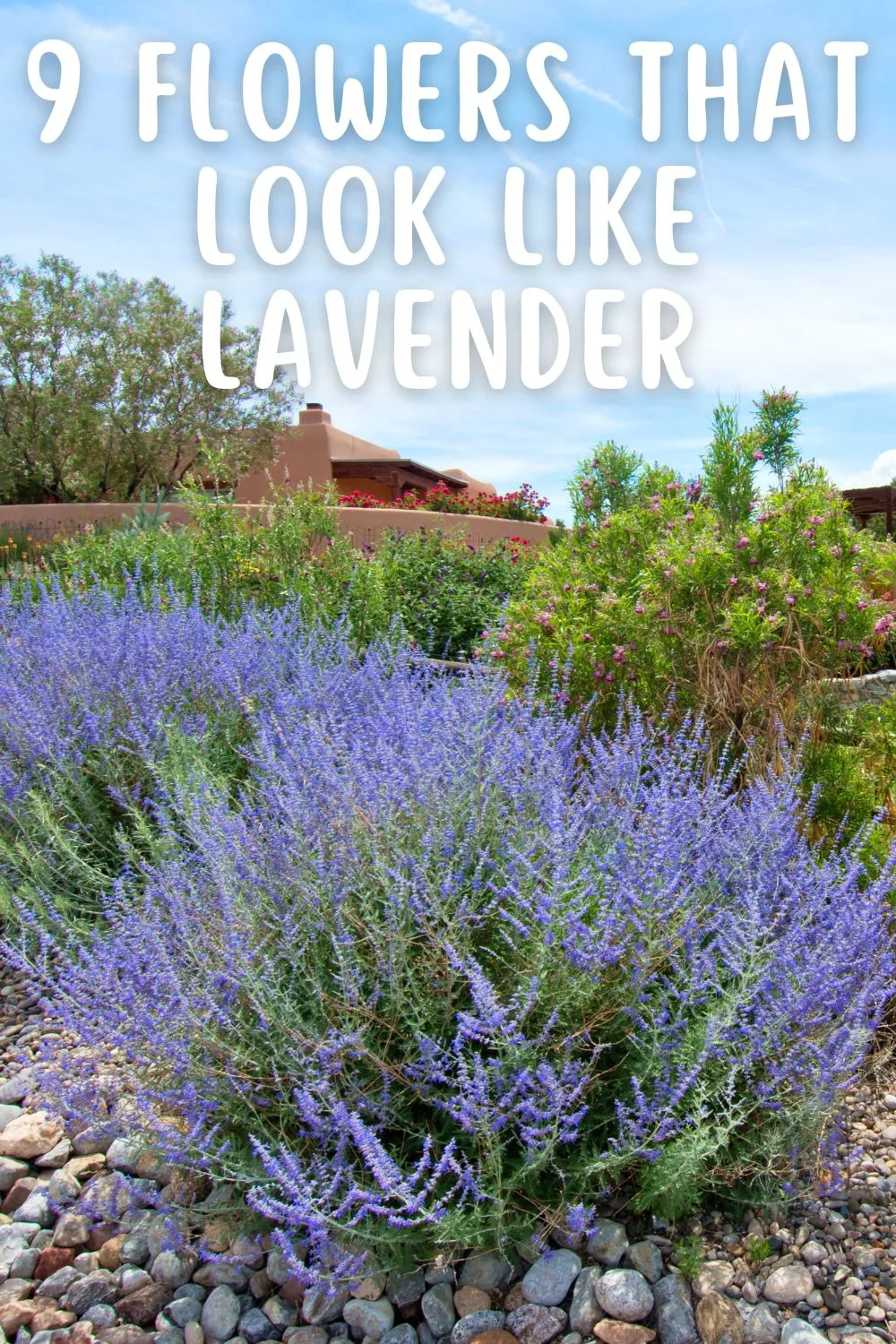If you love lavender as much as I do, you might try to figure out how to tuck this beautiful, aromatic plant into every corner of the yard. But sometimes, our growing conditions don’t cooperate with the vision in our heads. Perhaps the garden gets too much shade, or the soil doesn’t drain well. Or maybe you just want a variety of plants that resemble your favorite herb! Whatever your reasons, let’s look at some flowers that look like lavender.

No lavender lookalike, of course, can match the wonderfully unique fragrance of lavender, but some grow well in the shade, some thrive in wetter conditions, and some have showier blooms.
Purple Flowers That Look Like Lavender
The following plants have varying degrees of similarity to lavender. Each has unique traits, too, so you can be sure to find several you like! Before moving on to other genera of plants, we’ll start with a couple of salvias because they are perhaps the most similar, and it’s hard to choose just one!
1. Russian sage (Salvia yangii)
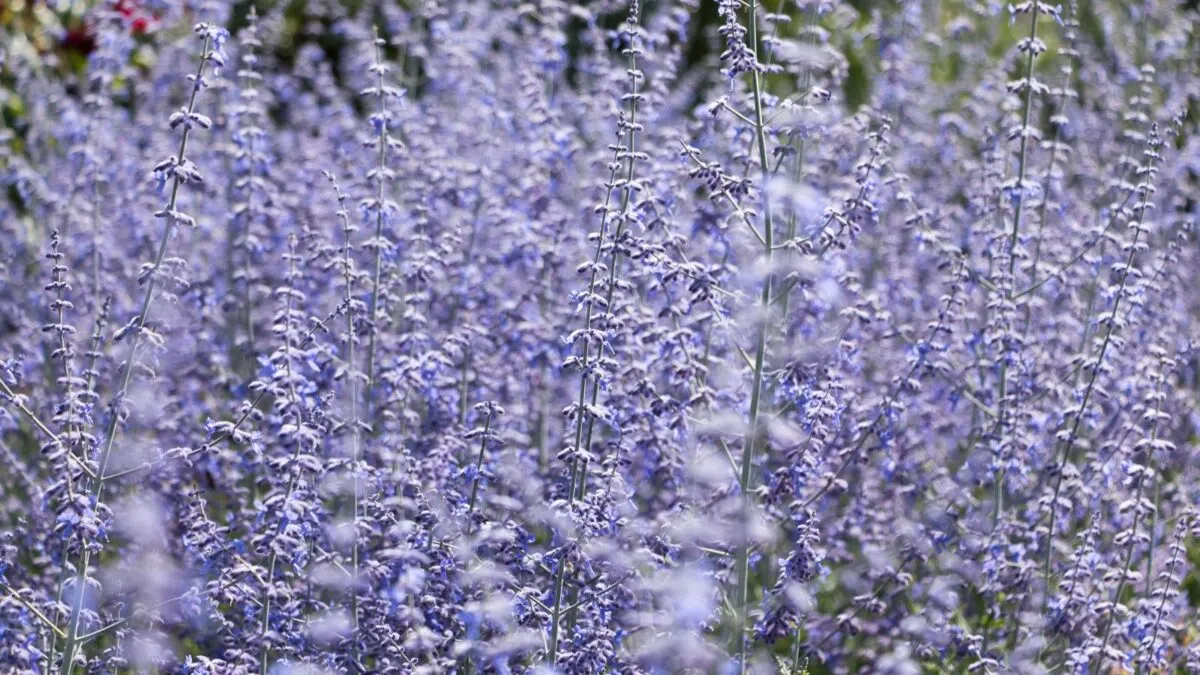
With finely dissected, silvery leaves and narrow spikes of tiny, tubular, purple flowers, Russian sage has a remarkably close resemblance to lavender. Its foliage also gives off a pleasant scent. But where lavender has single flower spikes, Russian sage produces multi-branched panicles. It also grows up to four feet tall, a full foot bigger than the largest lavender varieties.
This perennial native of Asian grasslands grows best in full sun and well-drained soil, making its cultural conditions similar to lavender. Cutting it back to just a few inches above the ground in early spring will encourage good growth.
2. Mexican bush sage (S. leucantha)

Also called velvet sage, Mexican bush sage produces spikes of persistent purple calyces, with white corollas appearing in late summer for a brief but stunning bicolor display. It has lance-shaped, gray-green leaves and grows three feet tall with a rounded, bushy habit.
This salvia appreciates rich, moist, well-drained soil and full sun but will tolerate some drought and a bit of afternoon shade. Not as hardy as Russian sage, Mexican bush sage thrives in USDA zones 7–10.
3. Spanish sage (S. lavandulifolia)

A smaller, hardier salvia, Spanish sage grows to just one and a half feet tall and wide. It has narrow, gray-green foliage very closely resembling lavender, hence the species name lavandulifolia. Highly aromatic, the plant smells very much like rosemary. Its tiny, light purple flowers bloom in widely spaced whorls.
Native to the rocky slopes of Spanish mountains, Spanish sage tolerates temperatures down to -10 degrees Fahrenheit. It performs best in full sun and requires dry, well-drained soil. Rocky or sandy soil best mimics its natural habitat.
4. Hyssop (Hyssopus officinalis)
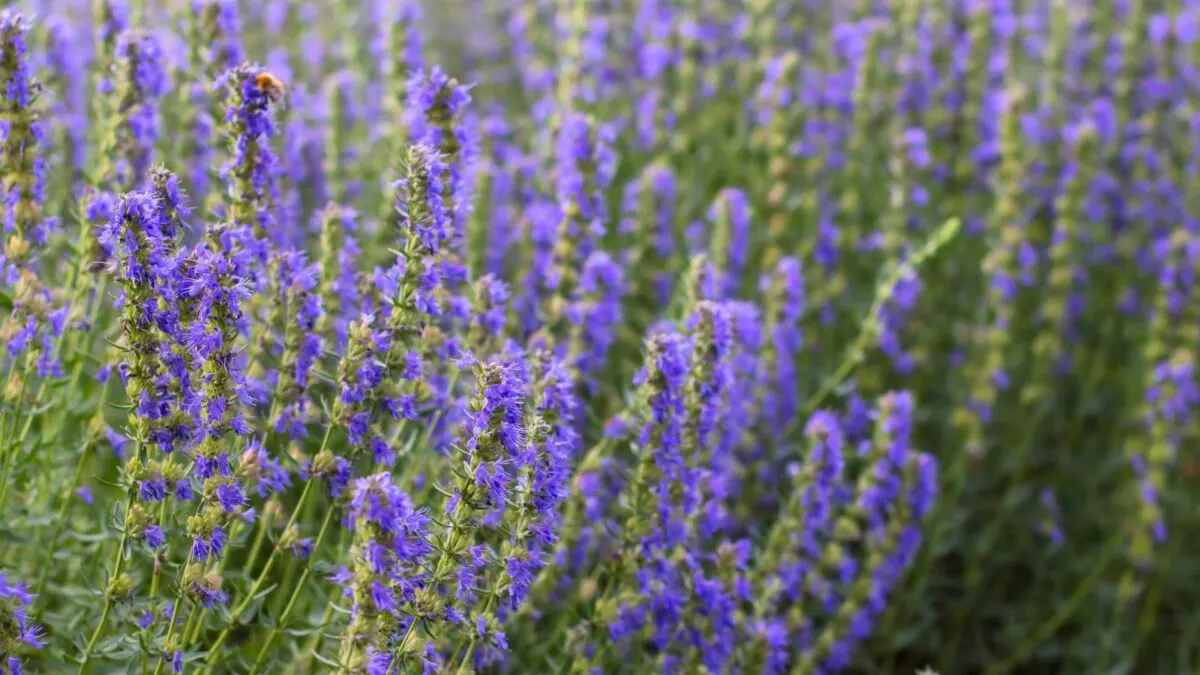
Hyssop is a short-lived, semi-evergreen perennial. With a height of one to two feet, it grows to a similar size as most lavenders with an upright habit that works well in settings from a low hedge to a rock garden. Spikes of purple to blue, fragrant flowers bloom throughout the summer above narrow, dark green, shiny leaves.
It grows well in full to partial sun and fertile, well-drained to dry soil. A spring trimming will help the plants stay lush and healthy.
5. Catmint (Nepeta mussinii)
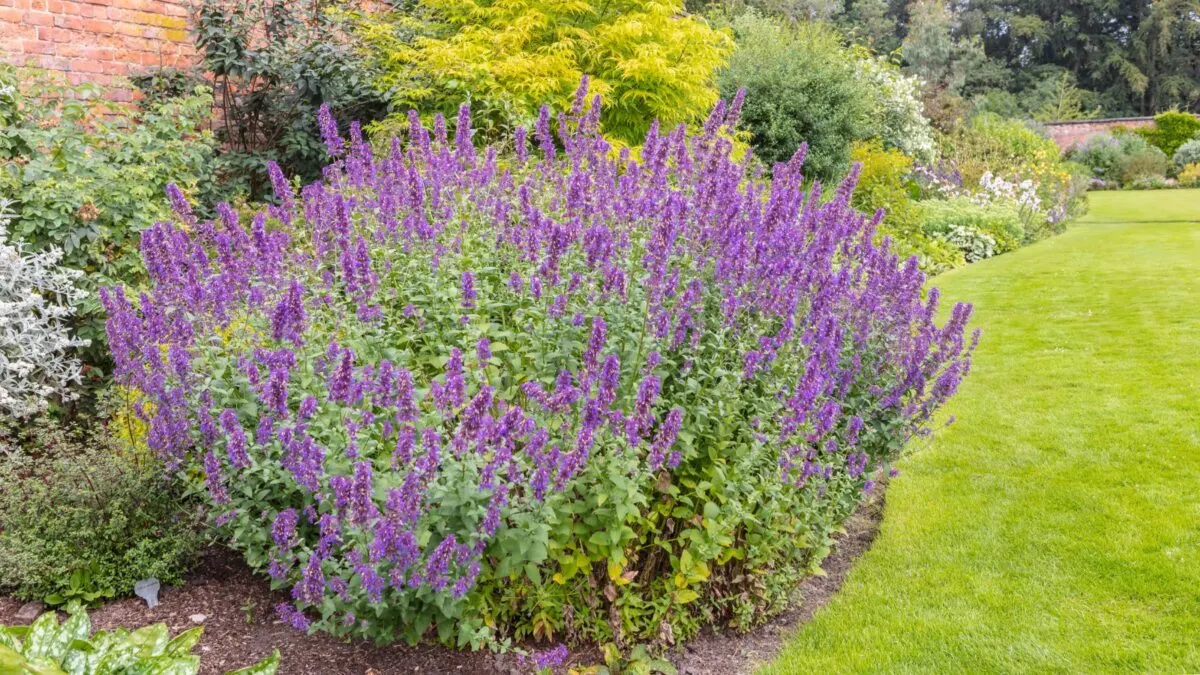
True to its name, catmint has a minty aroma. However, it shouldn’t be confused with catnip, which has a more sprawling habit and a stimulating effect on cats. Catmint has a more compact, upright habit and grows up to three feet tall. It produces beautiful spikes of blue, lavender, pink, or white flowers.
Catmint prefers full sun and well-drained soil, though it’s not terribly picky about soil type. Take care choosing catmint for your garden, as some varieties can become weedy.
6. Rosemary (Rosmarinus officinalis)
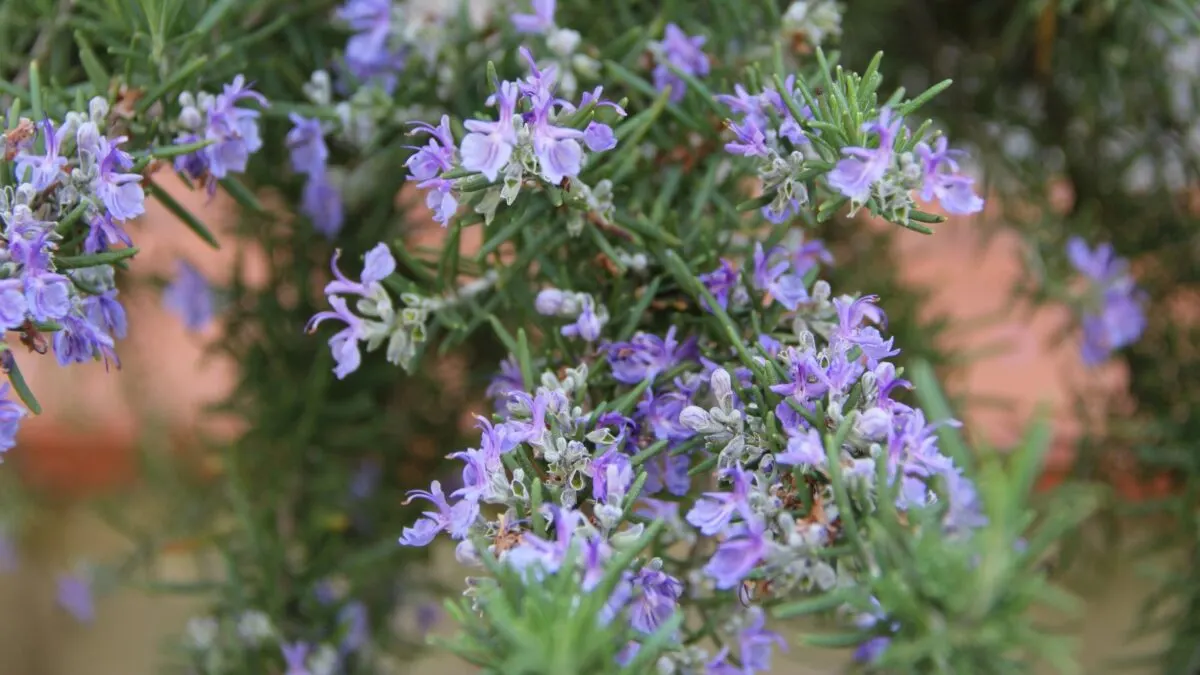
Rosemary has very similar foliage to lavender, though the leaves tend to be a darker shade of green and have a piney scent. This perennial evergreen can grow as tall as four to six feet. Its tiny, pale blue, pink, or white flowers grow in small clusters along the branches.
Rosemary does not typically tolerate temperatures below 20 degrees Fahrenheit, so it is best grown as a potted plant or planted next to a heat-retaining wall in colder regions. Like lavender, it prefers full sun and excellent soil drainage.
7. Anise hyssop (Agastache foeniculum)
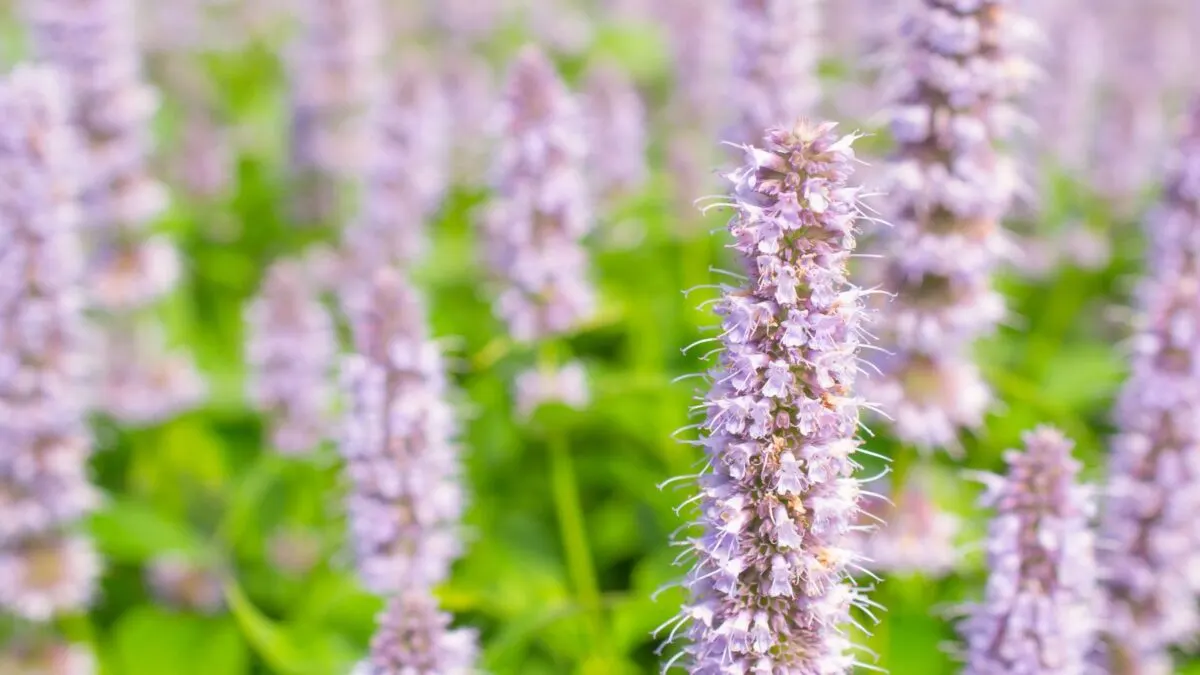
Not a true hyssop, anise hyssop is an alternative native to parts of the upper Midwest and Great Plains. Growing two to four feet tall, it produces terminal spikes of small, purple flowers in mid- to late summer. The toothed, ovate to broad-lanceolate leaves grow on square stems and have an aniselike scent.
This hardy plant grows best in full sun and moist, well-drained soils but tolerates some shade and dry conditions.
8. Marsh blazing star (Liatris spicata)

With its bottlebrush flowering spikes, marsh blazing star looks something like a larger, showier lavender plant. It has grasslike foliage and grows three to six feet tall. With a clumping habit, marsh blazing star is stunning grown in mass plantings.
This native of the eastern US grows best in moist, well-drained soils and full to part sun, though shade can cause it to become floppy. It tolerates summer heat and humidity.
9. Spiked speedwell (Veronica spicata)
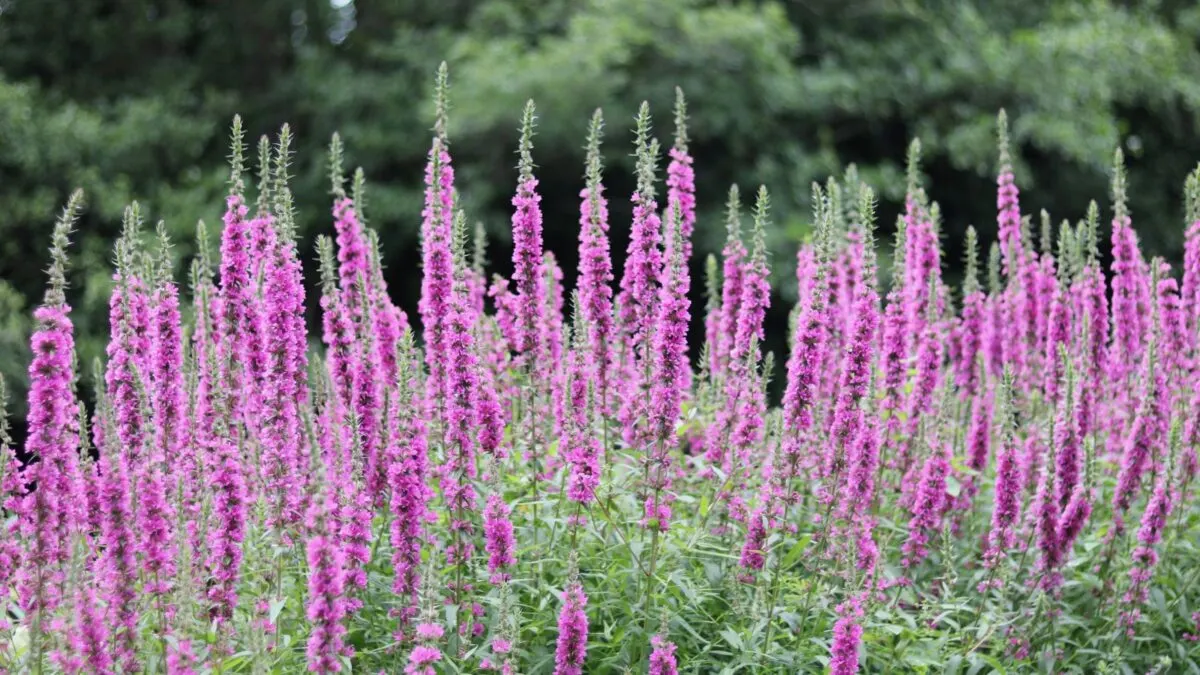
Spiked speedwell blooms in late spring and into midsummer, and it will rebloom in the fall if the spent flower stalks are cut back. The bluish-to-purple flowers appear in dense terminal racemes above the simple, linear-lanceolate foliage. It grows two to three feet tall.
A native of Europe and Asia, spiked speedwell prefers moist, well-drained soil and full sun. It is easy to grow and hardy down to zone 3.
More Purple Flowers For Your Garden

- purple perennials that love the shade
- purple flowers that attract hummers
- purple succulents
- purple flowering trees
I hope this list of beautiful plants resembling lavender has inspired you to add more purple flower spikes and silvery, aromatic foliage to your garden! From similar plants that tolerate shade or moisture (or both!) to native lookalikes, there is a plant on this list for just about every lavender-loving gardener.
Best Lavender Farms To Visit This Summer

There’s nothing like being surrounded by calming, sweetly scented, purple lavender flowers. The bees’ hum and the butterflies’ dancing make it an amazing experience. Plan to take your family to a lavender farm this summer for an exquisite sensory experience. This directory of lavender farms by state will help you find lavender fields nearby.
